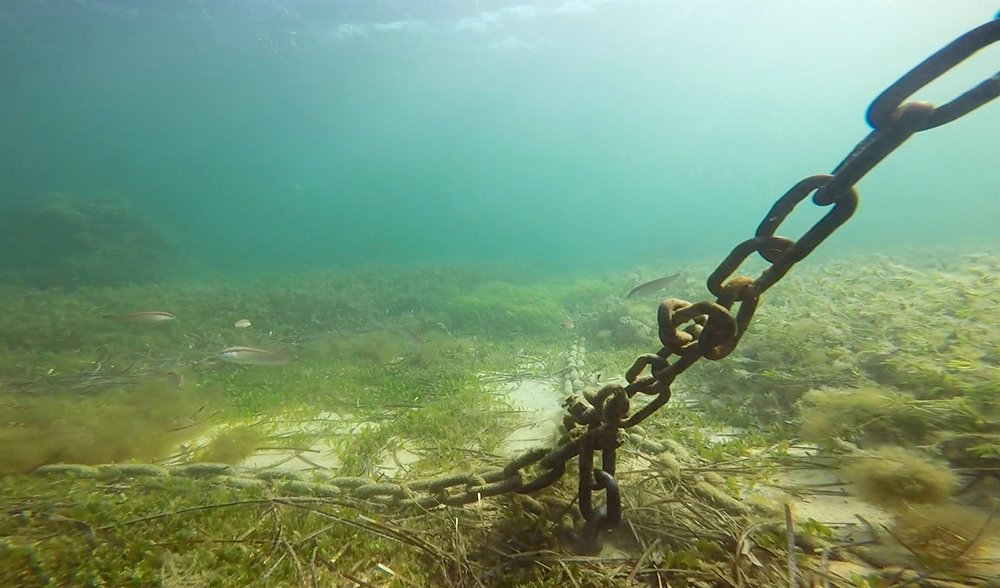Relax, the damage to Rottnest’s seagrass isn’t as bad as we thought

A RECENT STUDY by Western Australian scientists found 4.8ha of Rottnest Island’s seagrass meadows has been scoured by chains from almost 900 moorings in bays around the island.
Tourists flock from far and wide to visit the popular holiday destination, which is home to an abundance of marine life, including nine varieties of seagrass, 25 types of coral, 135 tropical fish species, dolphins, sea lions and whales.
But the study, published in Nature: Scientific Reports, states when visitors moor their boats, they drift with the wind, currents and waves, dragging heavy chains across the seafloor and damaging seagrass meadows – which provide vital services to the island’s marine ecosystems.
According to at least one expert, there are a number of flaws in the study and its extensive media coverage comes at the expense of Rottnest’s reputation.
“It’s just done us irreparable damage when we actually are world-class in terms of our environmental work,” said Dr Peter Hick, marine specialist and Rottnest Island Authority board member.

While 4.8ha is an alarming figure, the researchers point out it represents less than 1% of the island’s seagrass meadows. (Image: Edith Cowan University)
“Misleading figure”
The study’s lead researcher Dr Oscar Serrano from Edith Cowan University’s Centre for Marine Ecosystems Research says there are still a number of harmful moorings that need to be replaced on the island. However, Peter argues the old moorings were all replaced in the 1980s in an effort to protect the meadows.
“They’re making claims that there are 900 moorings with chains scraping over around 70-80sqm per mooring – getting this misleading figure,” Peter said. “There is not one mooring at Rottnest that is like that – every mooring at Rottnest is either a pin mooring or is a secured chain mooring, which doesn’t give it the potential to scrape on the ground at all and they are inspected annually,” he argued.
“We’re finding we’ve even had cases where up to 65 per cent of the seagrass has come back within two years, but in the last 25 years since we’ve stopped using swing-chain moorings, we’ve had an incredible increase in seagrass.”
Less than 1% of seagrass affected
Oscar is confident in his research, but said that what made headlines was not actually the main findings of the study – and that, when put into context, 4.8ha is less than one per cent of the island’s seagrass meadows.
He also found positive results – comparisons of high-resolution aerial images taken of moorings in 1989 and 2009 in the island’s Thomson and Stark Bays showed a reduction in seagrass in Stark Bay, but the recovery of 20 per cent of the previously scarred area in Thomson Bay where the largest meadows are found.
“It is important that we keep the message clear and we highlight the positive things as well,” Oscar said. “I feel and I know that the Rottnest Authority is doing a great job in managing the ecosystem, so it is unfortunate the media has focussed on the negatives rather than the positives.”
Key information
Oscar says the study’s main focus was determining the amount of carbon dioxide at risk of being emitted after disturbance of the seagrass, which has world-wide implications in policy-making for a blue-carbon economy (in which carbon is captured and stored by marine and wetland ecosystems).
Seagrass meadows – as well as salt marshes and mangroves – absorb large amounts of carbon dioxide and when damaged release it back into the ocean and atmosphere.
“There is an opportunity for Australia to offset carbon dioxide emissions by the preservation of these coastal ecosystems,” Oscar said.
“For instance a mining company could pay to replace the harmful moorings from Rottnest Island for more environmentally friendly moorings, and then they’d be able to offset their own carbon emissions by preserving the ecosystem and promoting restoration activities and conservation.”
RELATED CONTENT
- Rottnest Island: Knowing the good life
- VIDEO: Quokkas of Rottnest Island
- Rottnest Island’s best beaches




